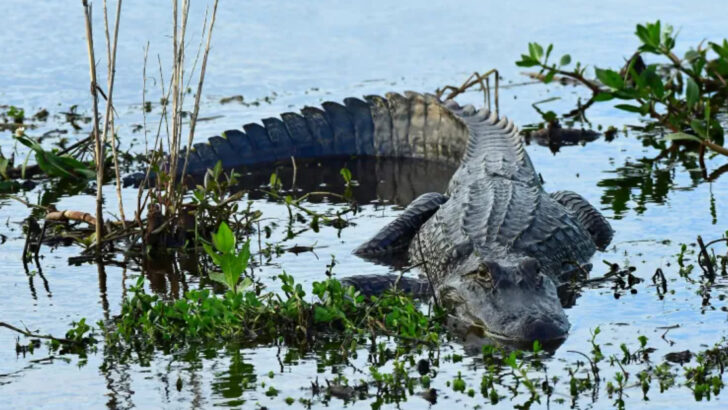There are places in America where stepping outside means you might not be the apex predator anymore.
In these states, backyard ponds have teeth. Golf courses? Patrolled by prehistoric reptiles. And swimming holes? You’d better check twice.
We’re talking about alligator country—where the sun blazes, the swamps bubble, and ancient eyes watch from just beneath the surface.
Some states are practically crawling with these cold-blooded kings. From the gator-dotted marshes of the South to lakes that look calm—until they aren’t—this list breaks down where you’re most likely to meet a scaly local.
Bring your curiosity. And maybe don’t dangle your toes off the dock.
Florida
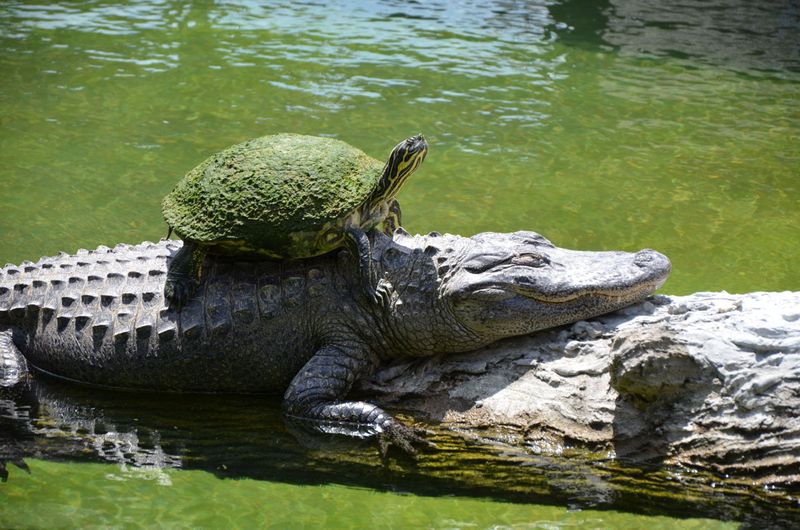
Florida is a haven for alligators, boasting the largest population in the United States. With its vast network of swamps, lakes, and rivers, the Sunshine State offers an alligator’s paradise. The Everglades, a World Heritage Site, is teeming with these prehistoric reptiles. Visitors can embark on thrilling airboat rides to catch a glimpse of them in their natural habitat. At dawn or dusk, you might see their eyes glistening above the water’s surface, adding a mysterious charm to the wetlands. Florida’s warm climate and expansive wetlands make it a perfect home for these remarkable creatures.
Louisiana
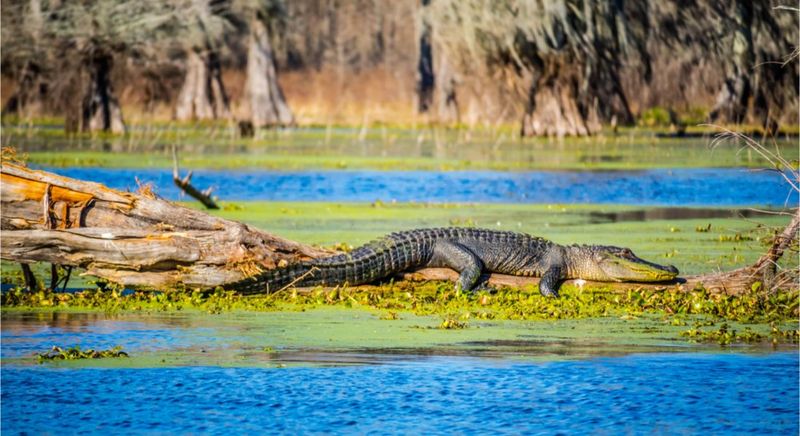
In Louisiana, the bayous are alive with the lurking presence of alligators. Known for its rich Cajun culture and vibrant ecosystems, this state ranks second in alligator numbers. The swamps, with their thick cypress trees and Spanish moss, create an enchanting backdrop for spotting these majestic creatures. Many locals and tourists enjoy guided swamp tours, where the eerie calls of wildlife punctuate the air. Louisiana’s mix of marshlands and wetlands offers a thriving environment for alligators, making it a top destination for wildlife enthusiasts seeking an authentic Southern experience.
Texas
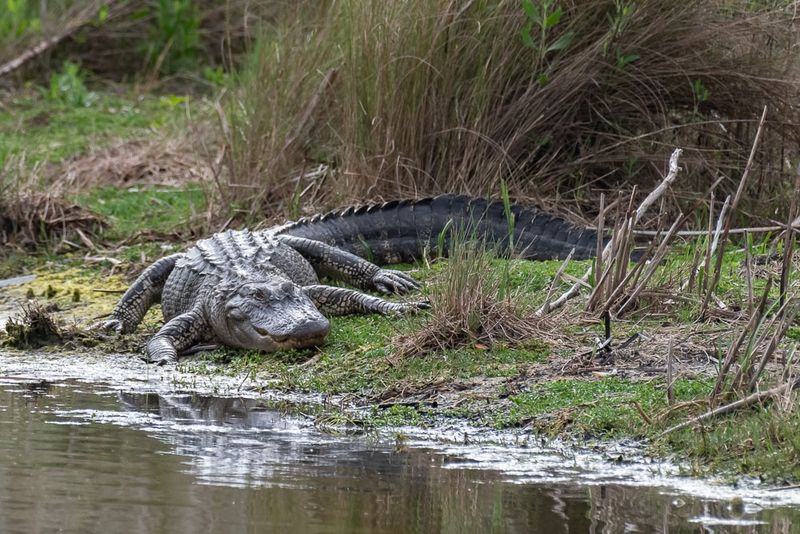
Everything’s bigger in Texas, including its alligator population. From the eastern swamps to the coastal prairies, alligators find abundant habitats in the Lone Star State. The Brazos Bend State Park, close to Houston, is a renowned spot to see these reptiles up close. Early morning and late afternoon provide optimal times for sightings, as alligators bask in the sun. The combination of freshwater environments and warm temperatures creates ideal living conditions. Texas’ diverse landscapes and thriving ecosystems make it a significant player in the realm of alligator conservation.
Georgia

Georgia’s scenic wetlands host a substantial alligator population, particularly in the southern regions. The Okefenokee Swamp, a vast peat-filled wetland, is a prime location for alligator spotting. This enchanting place, with its labyrinth of waterways and dense forests, offers a mystical experience for nature lovers. Alligators here can be seen gliding silently through the water or basking on the banks. Georgia’s combination of humid climate and diverse aquatic habitats provides a nurturing environment for these ancient reptiles, making it a favorite spot for wildlife photographers and adventurers alike.
South Carolina
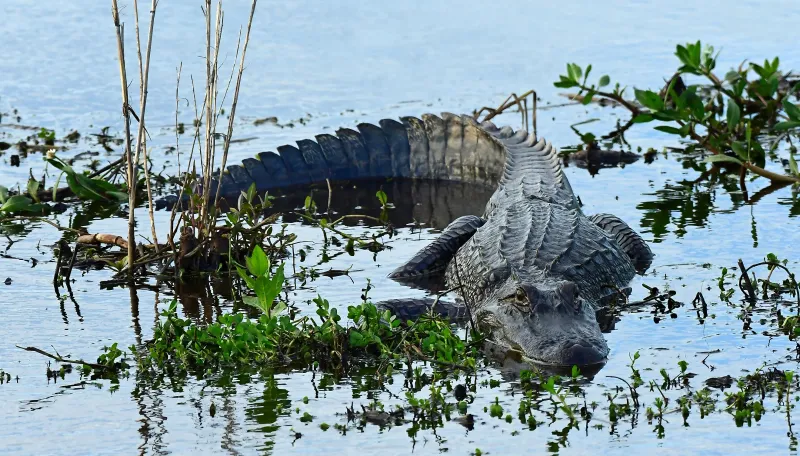
South Carolina’s coastal marshes and tidal creeks teem with alligators. The state’s warm climate and abundant waterways create a hospitable environment. Francis Marion National Forest and the Lowcountry region are popular spots to observe these reptiles in action. Visitors often enjoy kayaking through the waterways, where they might encounter an alligator sunning itself on the banks. The lush vegetation and serene landscapes offer a perfect setting for photography. South Carolina’s dedication to preserving its natural habitats ensures a flourishing population of these fascinating creatures.
Alabama
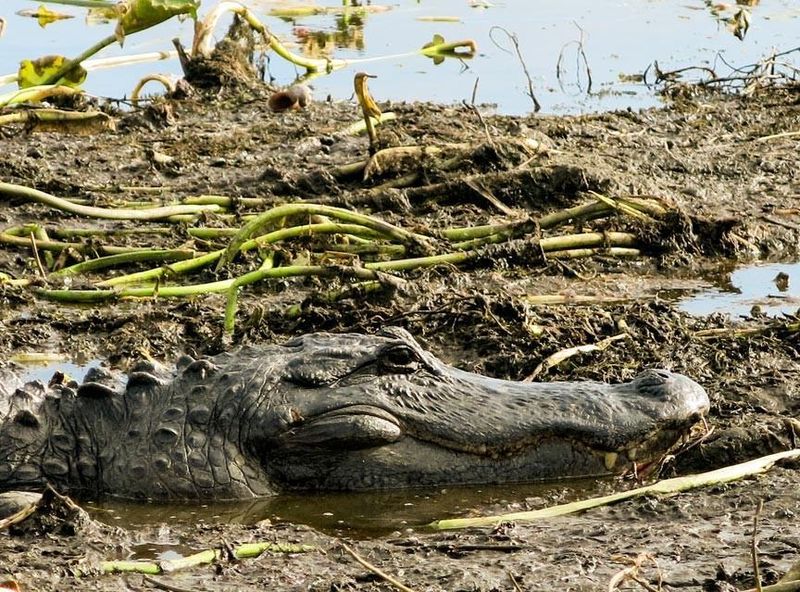
Alabama’s waterways and wetlands provide ample space for alligators to thrive. The Mobile-Tensaw River Delta, known as ‘America’s Amazon,’ is a biodiversity hotspot and a prime location for alligator sightings. Here, the gentle flow of rivers and dense vegetation create an ideal habitat. Visitors can take guided tours to explore the delta’s rich ecosystem, where alligators are a common sight. Alabama’s commitment to conservation and wildlife protection ensures that these majestic creatures continue to prosper in the state’s lush and varied environments.
Mississippi
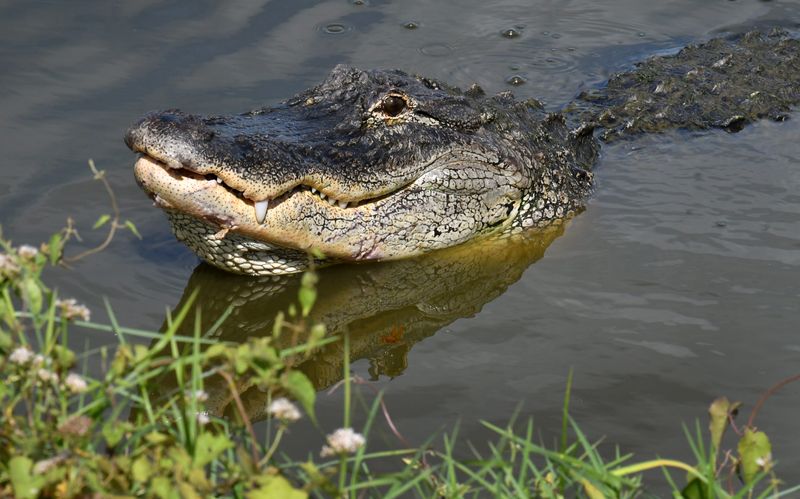
Mississippi’s bayous and wetlands offer a picturesque backdrop for its healthy alligator population. The Pascagoula River, the largest unimpeded river in the contiguous United States, is home to numerous alligators. Here, they navigate the waters silently, blending seamlessly into their surroundings. The state’s dedication to preserving its natural landscapes has created thriving conditions for these reptiles. Visitors often enjoy boat tours or hiking trails that offer a chance to witness these creatures in the wild. Mississippi’s diverse ecosystems continue to support a robust alligator population.
North Carolina
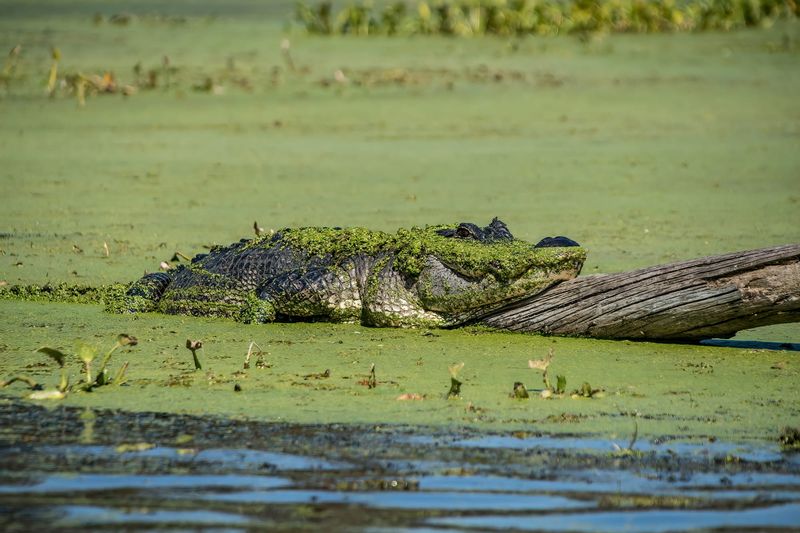
North Carolina’s coastal regions, with their intricate network of rivers and marshes, are home to a thriving alligator population. The Alligator River National Wildlife Refuge is aptly named and serves as a sanctuary for these reptiles. Here, visitors can explore the scenic trails and waterways, where alligators are often spotted gliding through the water. The state’s commitment to wildlife conservation ensures that these ancient creatures have a safe and nurturing habitat. North Carolina’s beautiful landscapes and diverse ecosystems make it a must-visit for alligator enthusiasts and nature lovers.
Arkansas
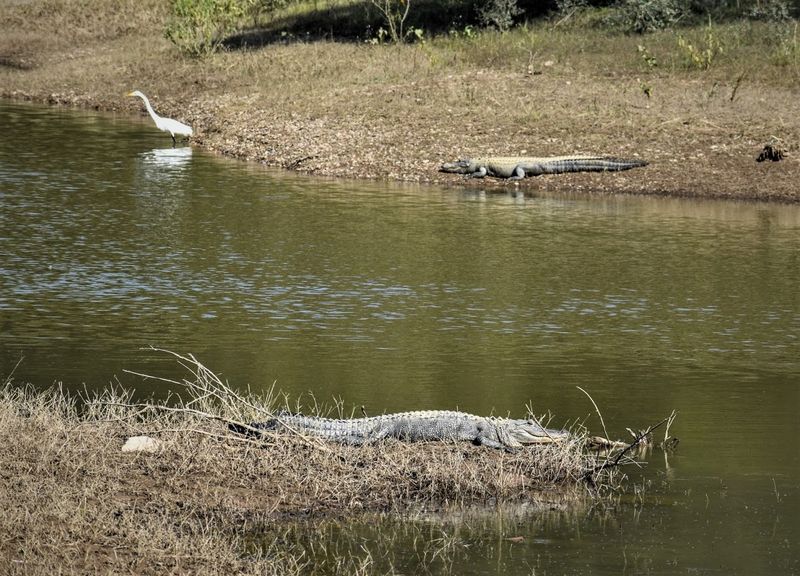
Arkansas might not be the first state that comes to mind when thinking of alligators, but its southeastern wetlands are home to a stable population. Places like Millwood Lake offer a unique opportunity to see these reptiles in their natural habitat. Here, the tranquil waters and lush surroundings provide an ideal setting for alligators to thrive. Visitors to Arkansas can enjoy peaceful nature walks and boat tours, where they might spot an alligator basking in the sun. The state’s commitment to preserving its natural beauty ensures a healthy environment for all wildlife.
Oklahoma
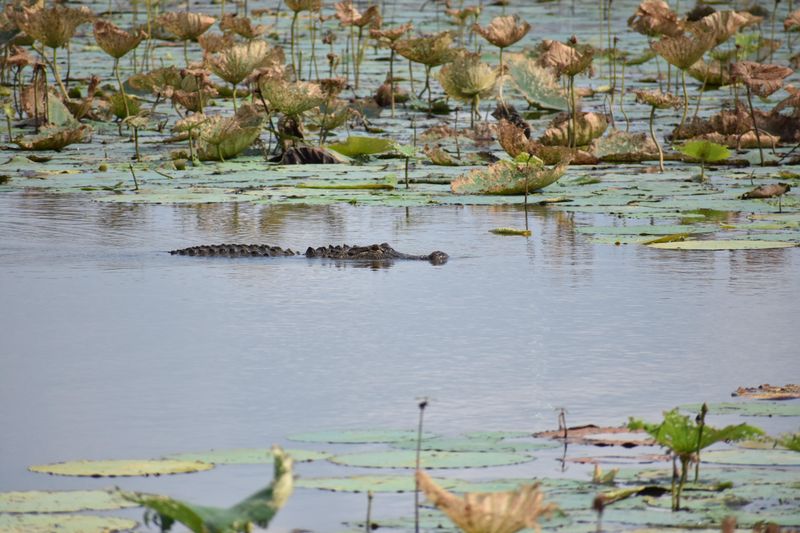
Oklahoma’s Red River and its tributaries provide a surprising habitat for alligators. While their presence might seem unexpected, the state’s warm climate and abundant water sources create a suitable environment. The southeastern region, in particular, offers the ideal conditions for these reptiles to thrive. Visitors might find themselves intrigued by the sight of an alligator amid the lush landscapes. Oklahoma’s diverse ecosystems and commitment to wildlife preservation have allowed for a stable alligator population, making it an interesting destination for nature enthusiasts.
South Dakota
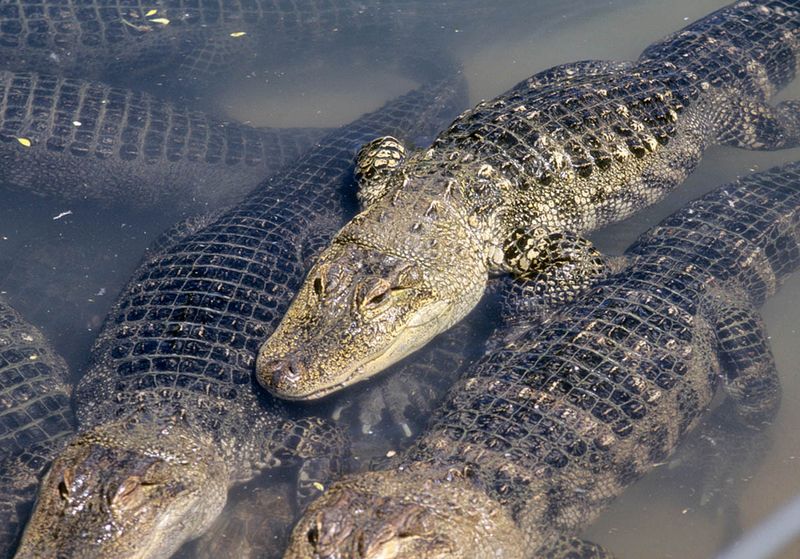
South Dakota’s Missouri River and its surrounding wetlands offer a unique environment for its small alligator population. While not as large as in southern states, these reptiles have adapted to the colder climates. The wetlands provide essential resources and habitats, allowing alligators to survive and thrive. Visitors may be surprised to encounter an alligator in this northern state, but it’s a testament to the adaptability of these creatures. The state’s lush landscapes and commitment to wildlife conservation make it a fascinating destination for those interested in nature and wildlife.
Missouri
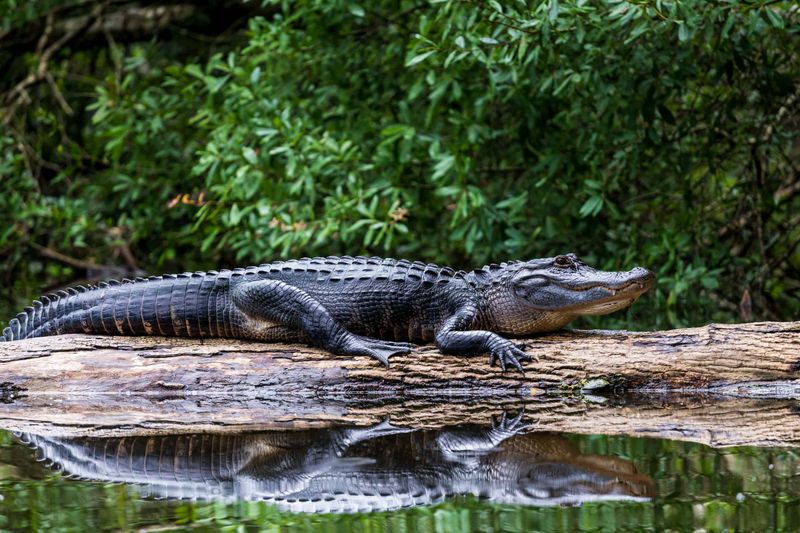
Missouri’s southern rivers and lakes are home to a modest but stable alligator population. Places like the Ozark National Scenic Riverways offer an opportunity to see these reptiles in their natural surroundings. The state’s varying climates and diverse ecosystems provide a suitable habitat for alligators. Visitors can explore the scenic landscapes and enjoy the thrill of spotting an alligator in the wild. Missouri’s dedication to preserving its natural beauty and wildlife ensures a thriving environment for these ancient creatures and other native species.
Tennessee
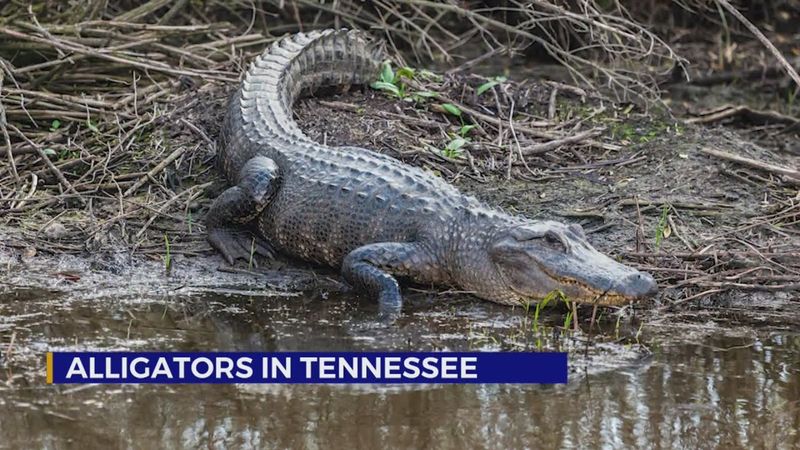
Tennessee’s Reelfoot Lake, formed by a series of earthquakes, is an unexpected habitat for alligators. The shallow waters and cypress-lined shores create an inviting environment for these reptiles. While not as populous as in southern states, Tennessee’s alligator population is stable and growing. Visitors can enjoy tranquil boat tours and nature walks, where they might catch a glimpse of an alligator sunning itself. The state’s commitment to conservation and wildlife protection ensures a healthy ecosystem, making Tennessee an intriguing destination for alligator seekers and wildlife enthusiasts.
Kentucky
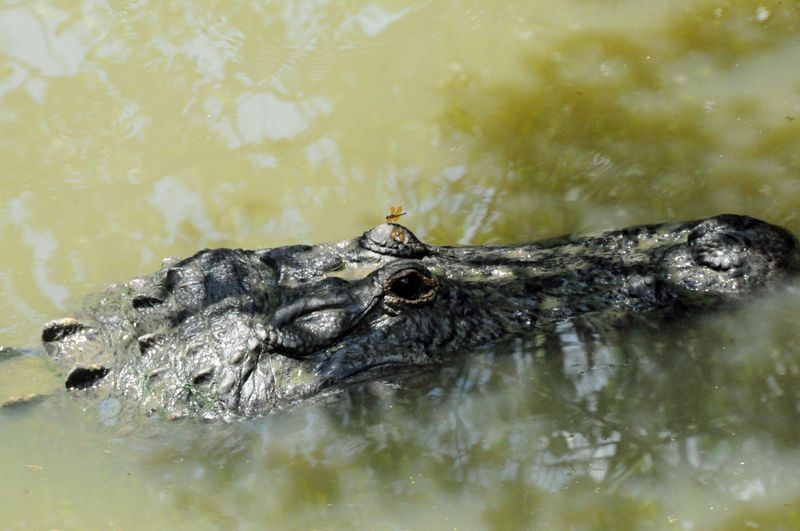
Kentucky’s Land Between the Lakes National Recreation Area offers a surprising alligator habitat. The region’s diverse ecosystems and abundant waterways provide an ideal environment for these reptiles to thrive. Visitors can explore the scenic trails and enjoy the serenity of the lush landscapes, where they might spot an alligator sunning itself. Kentucky’s commitment to wildlife preservation ensures a nurturing habitat for these ancient creatures. The state’s dedication to maintaining its natural beauty makes it a fascinating destination for those interested in wildlife and outdoor adventures.
Illinois
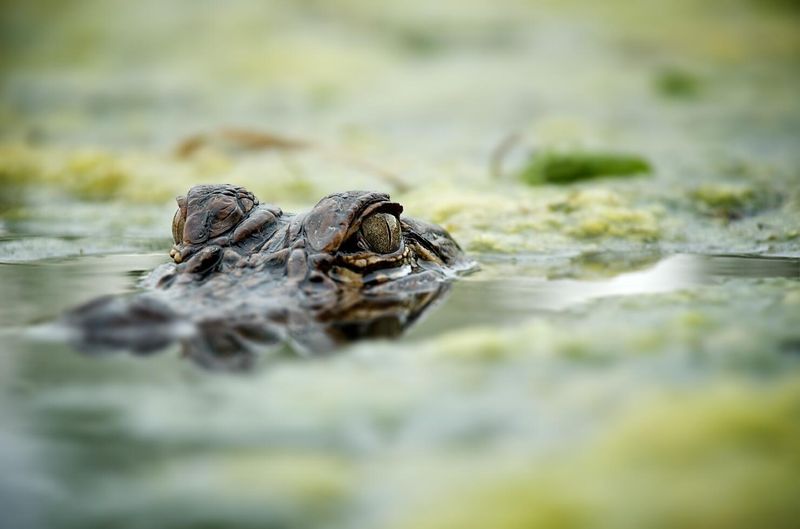
Illinois’ southern regions, with their river systems and wetlands, provide a surprising habitat for alligators. Places like the Cache River State Natural Area offer a unique opportunity to see these reptiles in their natural environment. The state’s diverse ecosystems and abundant natural resources create ideal conditions for alligators to thrive. Visitors can enjoy exploring the scenic landscapes, where they might encounter an alligator basking in the sun. Illinois’ commitment to preserving its natural beauty and wildlife ensures a thriving environment for these fascinating creatures and other native species.
Virginia
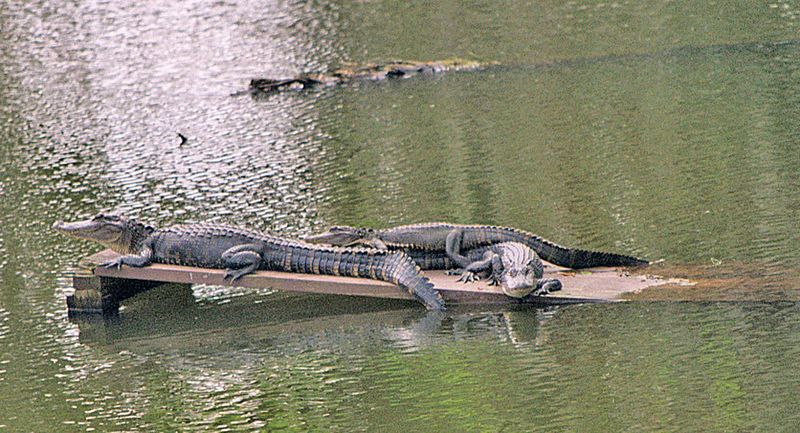
Virginia’s Great Dismal Swamp, straddling the border with North Carolina, is a haven for alligators. The dense forests and tranquil waters create an ideal environment for these reptiles. Visitors exploring the swamp’s scenic trails might encounter an alligator silently gliding through the water. The state’s dedication to wildlife conservation ensures that these ancient creatures have a safe and nurturing habitat. Virginia’s beautiful landscapes and diverse ecosystems make it a must-visit for alligator enthusiasts and nature lovers seeking a unique and enriching experience.

